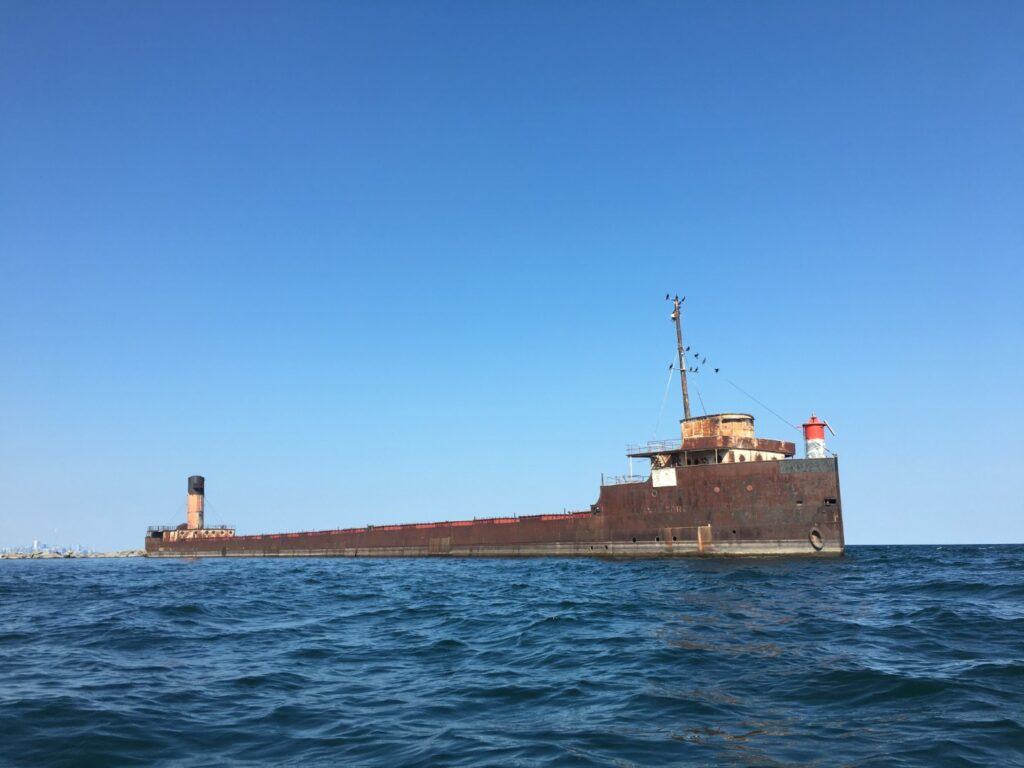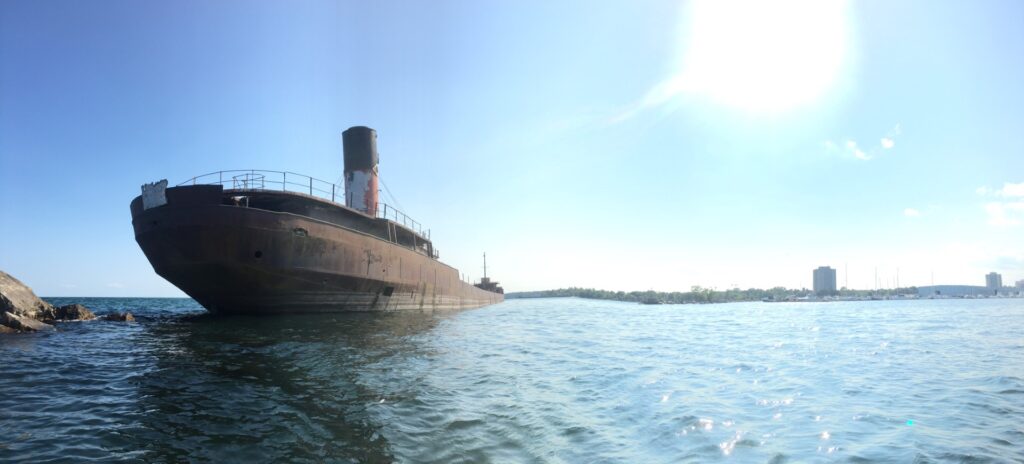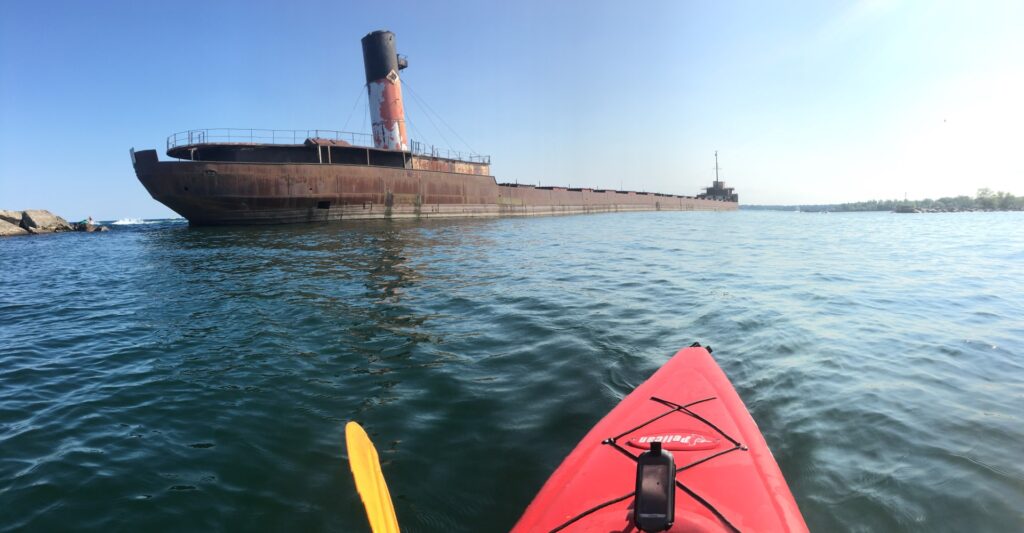Salvaging ships is typically a complex and expensive task with far too often devastating environmental effects. But for the S.S. William E. Corey, it was given a new life when its owners decided to sink the ship at the mouth of Credit River creating a breakwater that continues to this day to protect the marina and parks located along the shore of Lake Ontario. Today the ship is more than just a breakwater however, as it has become a symbol to the City of Mississauga and is best explored today by canoe, kayak, or paddle boarding.
The story of the William E. Corey begins at the Chicago Shipbuilding Company where on March 24, 1905 the ship was launched. The ship measured 193 meters long, 17 meters wide, and had a height of 9.4 meters. And with a gross tonnage of approx.. 4500 it, along with four other lakers launched around the same time, became the largest ships on the Great lakes, earning the unofficial title of Queen of the Lakes. The bulk carrier was built for the Pittsburgh Steamship Company where it quickly became the flagship for the company’s fleet and served its years transporting freight and bulk cargo across the Great Lakes.

Not long after it launch, at the end of November, 1905, the ship was making its way around the Apostle Islands in Lake Superior when the infamous Mataafa Storm hit the ship and forced it onto the rocks of Gull Island. But while temperatures dropped to -24 degrees Celsius and wind speeds reached over 100 km/h, the ship and its crew survived but with extensive damage to the ship. The powerful storm went on to kill 36 sailors and destroy/damage 28 other vessels including sinking the 130 meter long freight, the Mataafa not far from where the William E. Corey was damaged.
While the Pittsburgh Steamship Company was later merged into its parent company, the United States Steel Corporation in 1951, the ship continued to reliably serve it until July of 1963 when it was sold to the England based company, Upper Lakes Shipping Ltd. During this time the ships name was changed to the Ridgetown and while it was originally registered in England in 1965 it was re-registered once again as a Canadian ship.
The Ridgetown, continued to ship freight across the Great Lakes for seven more years until it was sold in 1970 to the Canadian Dredge & Dock Company. The company purchased the ship to be used to aid the construction of the Nanticoke Generating Station; an Ontario Hydro power plant near Nanticoke, Ontario. But it was not the ships cargo capabilities that were desired by the company and instead the company took advantage of its length, size, and cargo holds to fill it with rock and fill so that it would sink and provide protection to the lakeshore construction site. Thus, the ship found a new purpose as a temporary breakwater.

After three years, the rock-filled ship was floated to the surface and towed to Toronto until in the summer of 1974 it was once again towed to the harbour facilities at Port Credit in what would soon become incorporated as the City of Mississauga. Here at the mouth of the Credit River, the ship was once again filled with rock and sank to its current setting, now serving as a breakwater for the marina and parks that are found in the area.
Today the ship reminiscently overlooks Lake Ontario serving as a reminder to the early years of large steam powered lakers on the Great Lakes. And while it has been given a new purpose in life, it remains a symbol to the history and development of shipping on the Great Lakes.
From the land, the ship is best seen in J.C. Saddington Park in Mississauga. Following the trails to the waterfront, the ship can be seen across the river parallel to the shore. Please note that while it is technically just several meters from an accessible rock breakwater protruding into the lake, it is considered trespassing to walk along it. Aside from this, nesting birds, slippery rocks, and unpredictable water conditions make it dangerous to venture out onto the closely surveilled breakwater.
For those wishing to get closer however, there is no better way to do this than by canoe, kayak, or paddle board.

Sources & Further Exploring
Berry, S. (n.d.). Corey, William E. GreatLakesVesselHistory.com. Retrieved from http://www.greatlakesvesselhistory.com/histories-by-name/c/corey-william-e.
Forsyth, B. (2019). Old lake freighter finds second life as a breakwater. MilitaryBruce.com : Canadian Military History. Retrieved from https://militarybruce.com/old-lake-freighter-finds-second-life-as-a-breakwater/.
Modern Mississauga (2020). The history of Mississauga’s Great Lakes freighter, The Ridgetown. Retrieved from https://www.modernmississauga.com/main/2020/8/12/the-history-of-mississaugas-great-lakes-freighter-the-ridgetown.
Also be sure to checkout: